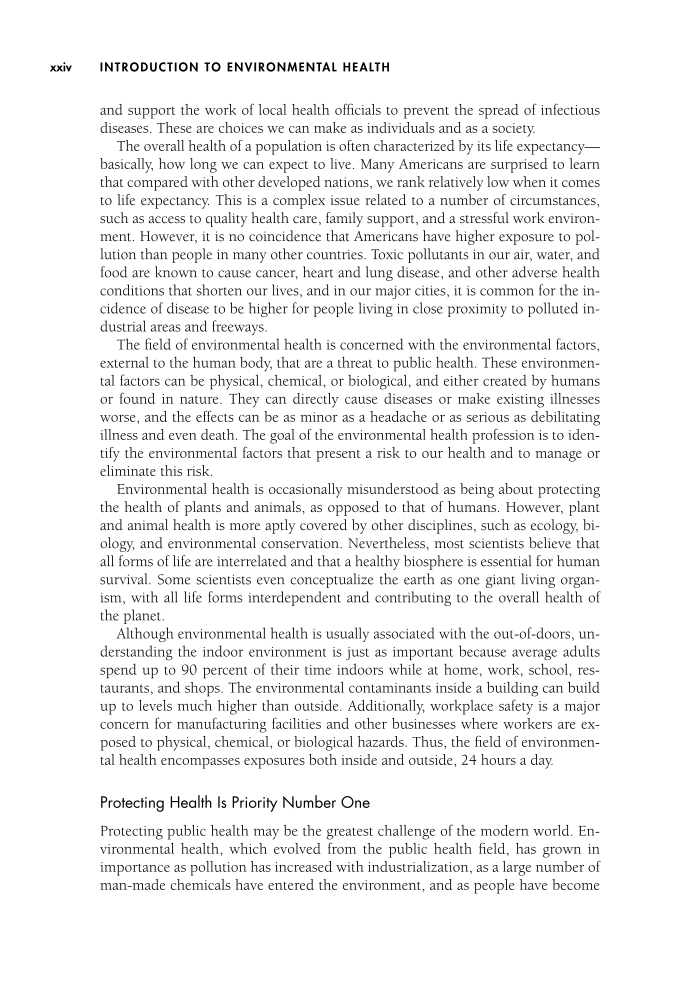xxiv INTRODUCTION TO ENVIRONMENTAL HEALTH and support the work of local health offi cials to prevent the spread of infectious diseases. These are choices we can make as individuals and as a society. The overall health of a population is often characterized by its life expectancy— basically, how long we can expect to live. Many Americans are surprised to learn that compared with other developed nations, we rank relatively low when it comes to life expectancy. This is a complex issue related to a number of circumstances, such as access to quality health care, family support, and a stressful work environ- ment. However, it is no coincidence that Americans have higher exposure to pol- lution than people in many other countries. Toxic pollutants in our air, water, and food are known to cause cancer, heart and lung disease, and other adverse health conditions that shorten our lives, and in our major cities, it is common for the in- cidence of disease to be higher for people living in close proximity to polluted in- dustrial areas and freeways. The fi eld of environmental health is concerned with the environmental factors, external to the human body, that are a threat to public health. These environmen- tal factors can be physical, chemical, or biological, and either created by humans or found in nature. They can directly cause diseases or make existing illnesses worse, and the effects can be as minor as a headache or as serious as debilitating illness and even death. The goal of the environmental health profession is to iden- tify the environmental factors that present a risk to our health and to manage or eliminate this risk. Environmental health is occasionally misunderstood as being about protecting the health of plants and animals, as opposed to that of humans. However, plant and animal health is more aptly covered by other disciplines, such as ecology, bi- ology, and environmental conservation. Nevertheless, most scientists believe that all forms of life are interrelated and that a healthy biosphere is essential for human survival. Some scientists even conceptualize the earth as one giant living organ- ism, with all life forms interdependent and contributing to the overall health of the planet. Although environmental health is usually associated with the out-of-doors, un- derstanding the indoor environment is just as important because average adults spend up to 90 percent of their time indoors while at home, work, school, res- taurants, and shops. The environmental contaminants inside a building can build up to levels much higher than outside. Additionally, workplace safety is a major concern for manufacturing facilities and other businesses where workers are ex- posed to physical, chemical, or biological hazards. Thus, the fi eld of environmen- tal health encompasses exposures both inside and outside, 24 hours a day. Protecting Health Is Priority Number One Protecting public health may be the greatest challenge of the modern world. En- vironmental health, which evolved from the public health fi eld, has grown in importance as pollution has increased with industrialization, as a large number of man-made chemicals have entered the environment, and as people have become
Document Details My Account Print multiple pages
Print
You have printed 0 times in the last 24 hours.
Your print count will reset on at .
You may print 0 more time(s) before then.
You may print a maximum of 0 pages at a time.





















































































































































































































































































































































































































































































































































































































































































































































































